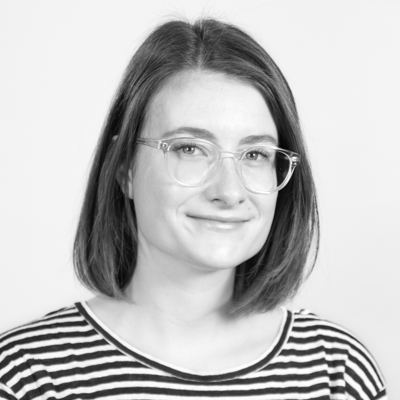What to know about the latest Social Security cost-of-living adjustment
A slightly more substantial increase for 2026, though not by much


The cost of living does not stay the same over time, and thankfully, neither does the amount of Social Security payments. To reflect increasing costs due to inflation and other economic factors, the Social Security Administration (SSA) regularly reviews its calculations for Social Security retirement benefits as well as Social Security Disability Insurance (SSDI) payments and Supplemental Security Income (SSI) payments. This update is what is officially known as a cost-of-living adjustment (COLA).
Effectively, the aim of these annual adjustments is to "ensure that your purchasing power remains the same even when prices rise due to inflation," said Bankrate. How much of an adjustment is required for that to happen each year, however, can vary widely.
What is the COLA for 2026?
For 2026, the cost-of-living adjustment is 2.8%. As a result, the average retiree will receive an additional $56 a month, increasing the average monthly check from $2,015 in 2025 to $2,071. Whether or not this will be enough of an increase for retirees is up for debate.
The Week
Escape your echo chamber. Get the facts behind the news, plus analysis from multiple perspectives.

Sign up for The Week's Free Newsletters
From our morning news briefing to a weekly Good News Newsletter, get the best of The Week delivered directly to your inbox.
From our morning news briefing to a weekly Good News Newsletter, get the best of The Week delivered directly to your inbox.
One expert, Martha Shedden, the co-founder of the National Association of Registered Social Security Analysts, described the increase as "'modest, especially for retirees whose cost increases may be higher in areas such as health care, housing or other retirement-specific expenses,'" said Kiplinger.
Meanwhile, David Payne, an economist for The Kiplinger Letter, said to Kiplinger: "With current inflation at 3%, and inflation next year a bit less, the COLA should help seniors mostly keep up."
How much does Social Security usually increase each year?
For context, the "2.8% 2026 COLA is higher than 2025's 2.5% COLA, but still lower than the average COLA of 3.7% since it became an annual occurrence in 1975," said The Motley Fool, a personal finance blog. But when looking at averages over just the past decade, the COLA for 2026 is "right on track" — although, "according to The Senior Citizens League, the purchasing power of Social Security benefits has declined by 20% since 2010," said the outlet.
It is also worth noting that while the SSA will review the data each year to weigh a cost-of-living increase, there is "no guarantee of an increase in any given year," said the AARP. In fact, the "amount of the increase can vary greatly from year to year," ranging from 0% all the way up to 14.3% over the period since COLAs began in 1975.
A free daily email with the biggest news stories of the day – and the best features from TheWeek.com
How is COLA calculated?
The SSA is responsible for calculating cost-of-living adjustments and then applying them to people's benefit payments. Its COLA calculation hinges on the Consumer Price Index for Urban Wage Earners and Clerical Workers (CPI-W), which is a "monthly inflation metric published by the Bureau of Labor Statistics that tracks changes in prices for common goods and services," said The Motley Fool.
To determine if a COLA is necessary and by how much, the SSA compares the CPI-W for the third quarter of the current year with the third quarter of the last year. Increases in the average CPI-W between those periods lead to an increase in benefits, while minimal or no change, or even a decrease, results in no adjustments being made.
Becca Stanek has worked as an editor and writer in the personal finance space since 2017. She previously served as a deputy editor and later a managing editor overseeing investing and savings content at LendingTree and as an editor at the financial startup SmartAsset, where she focused on retirement- and financial-adviser-related content. Before that, Becca was a staff writer at The Week, primarily contributing to Speed Reads.
-
 Political cartoons for December 13
Political cartoons for December 13Cartoons Saturday's political cartoons include saving healthcare, the affordability crisis, and more
-
 Farage’s £9m windfall: will it smooth his path to power?
Farage’s £9m windfall: will it smooth his path to power?In Depth The record donation has come amidst rumours of collaboration with the Conservatives and allegations of racism in Farage's school days
-
 The issue dividing Israel: ultra-Orthodox draft dodgers
The issue dividing Israel: ultra-Orthodox draft dodgersIn the Spotlight A new bill has solidified the community’s ‘draft evasion’ stance, with this issue becoming the country’s ‘greatest internal security threat’
-
 How to shop smarter with a grocery budget
How to shop smarter with a grocery budgetThe Explainer No more pushing your cart down the aisles on autopilot
-
 What will next year’s housing market look like?
What will next year’s housing market look like?The Explainer Here is what to expect from mortgage rates and home prices in 2026
-
 How your household budget could look in 2026
How your household budget could look in 2026The Explainer The government is trying to balance the nation’s books but energy bills and the cost of food could impact your finances
-
 What are the pros and cons of a Roth conversion for retirement?
What are the pros and cons of a Roth conversion for retirement?Pros and Cons By converting a traditional IRA to a Roth IRA, retirees can skip paying taxes on their withdrawals
-
 4 easy tips to avoid bank fees
4 easy tips to avoid bank feesThe Explainer A few dollars here and there might seem insignificant, but it all adds up
-
 4 often overlooked home maintenance tasks that could cost you later
4 often overlooked home maintenance tasks that could cost you laterThe Explainer A little upkeep now can save you money down the road
-
 What’s the best way to use your year-end bonus?
What’s the best way to use your year-end bonus?the explainer Pay down debt, add it to an emergency fund or put it toward retirement
-
 What are portable mortgages and how do they work?
What are portable mortgages and how do they work?the explainer Homeowners can transfer their old rates to a new property in the UK and Canada. The Trump administration is considering making it possible in the US.
